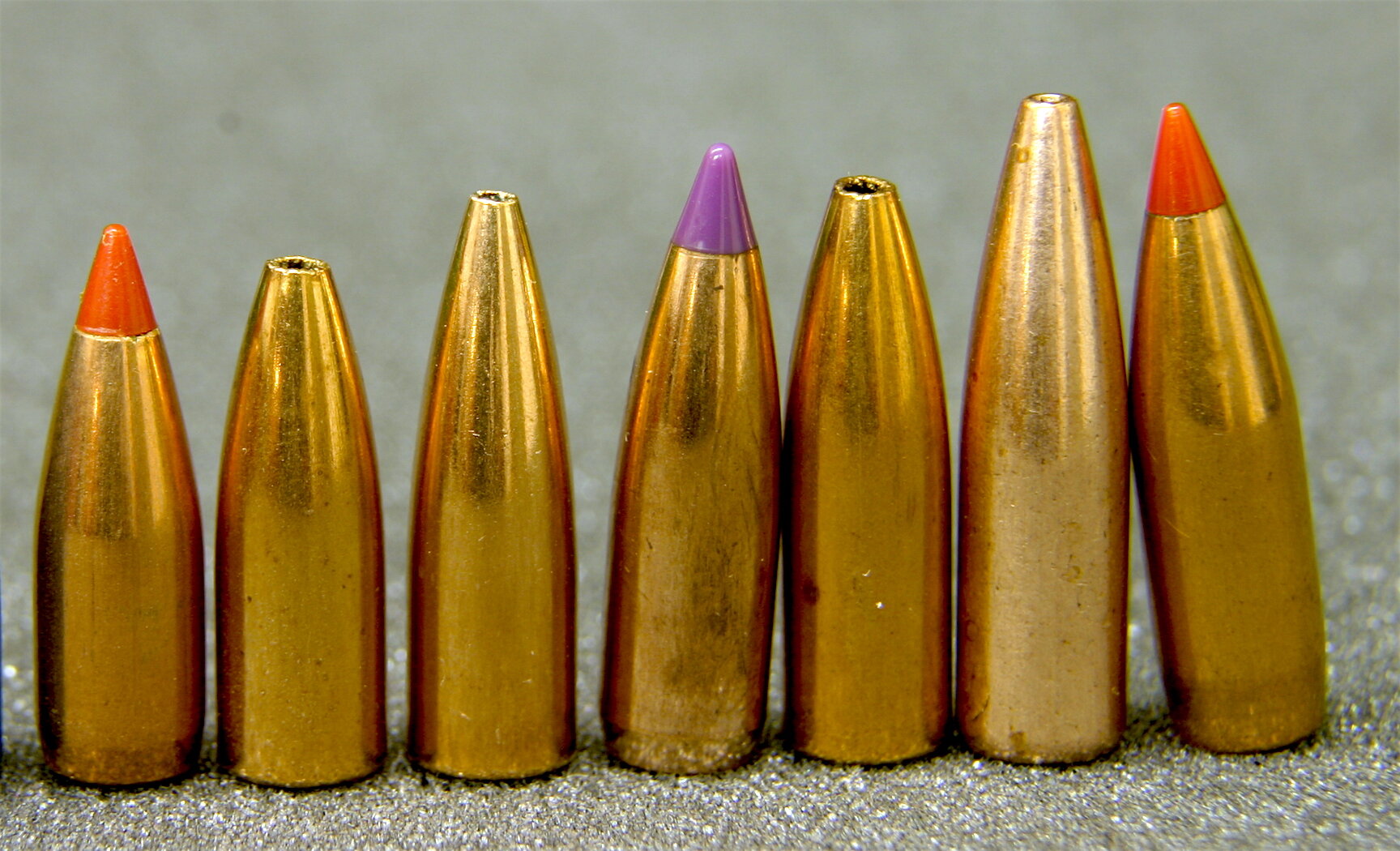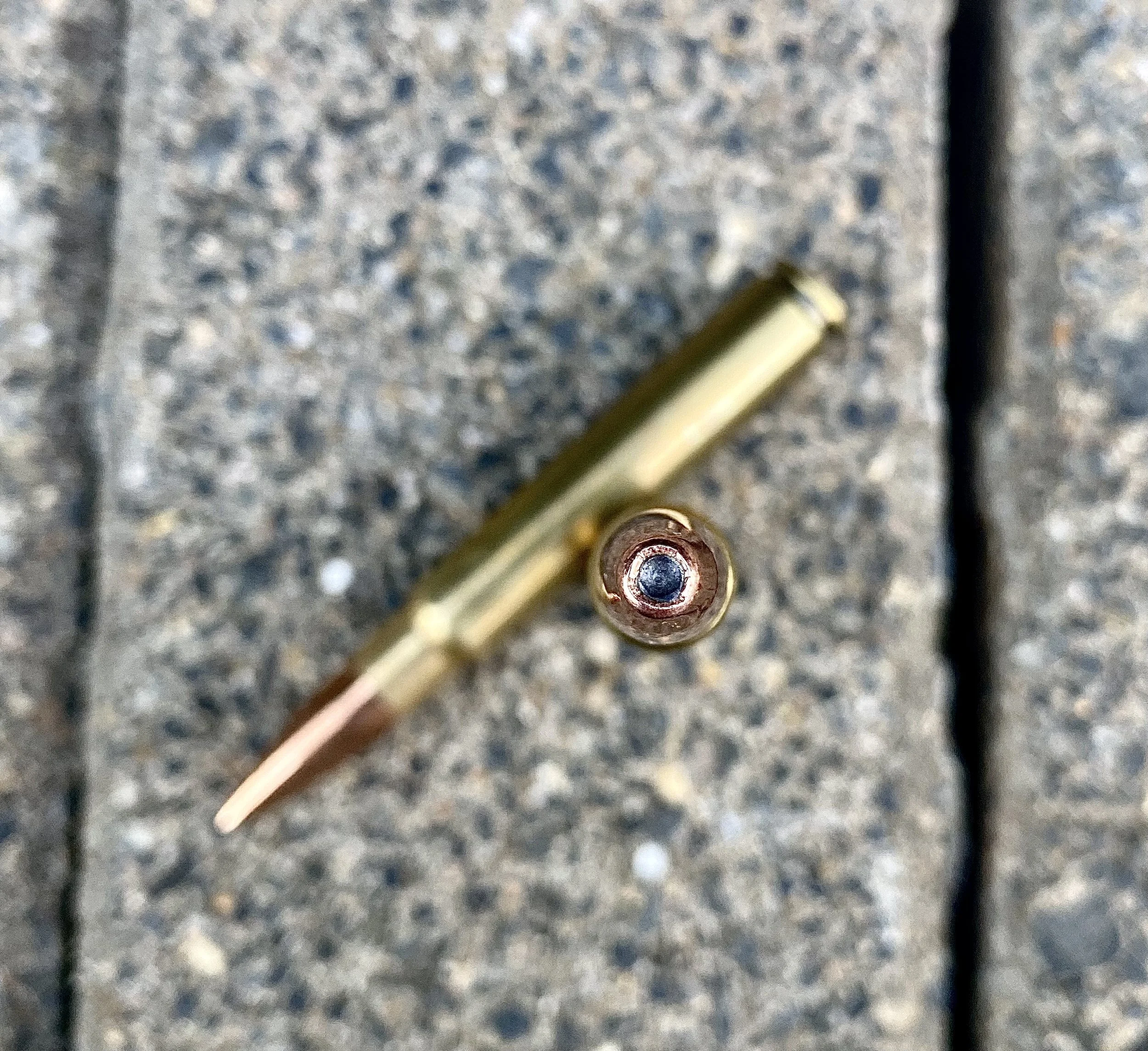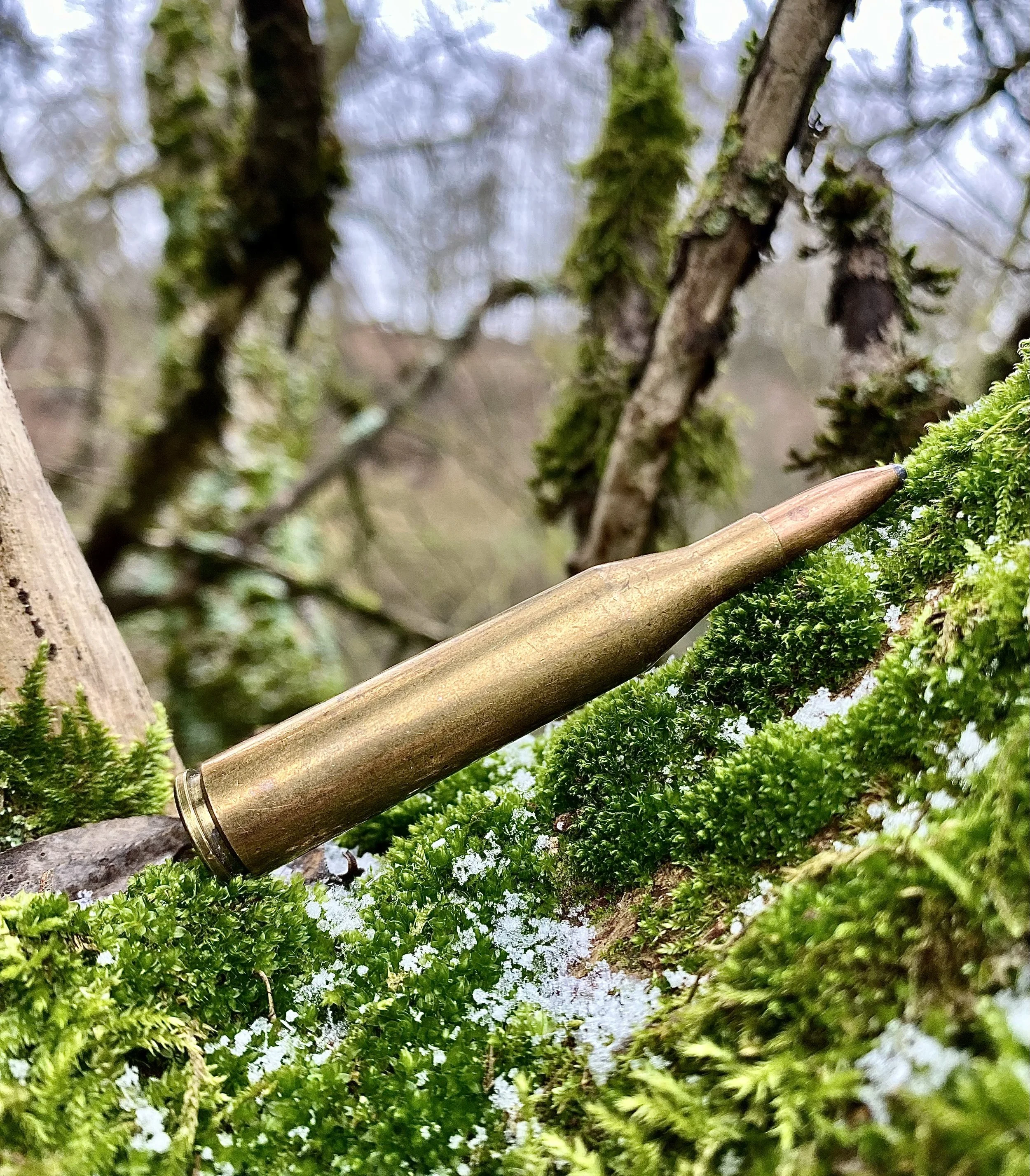Frangible Varmint Bullets for Big Game
This is "no shot" due to the horizon, but illustrates one shortcoming of frangible bullets for anchoring wounded but departing game. There's no way a varmint bullet from this angle will reach the vitals unless you make a head shot. Just say no.
This is a topic “gun writers” are never supposed to broach. Standard operating procedure is to warn big game hunters against ever shooting frangible (thinly jacketed, soft lead, easily broken) varmint bullets at big game. Just say no!
Except they work. Dramatically.
But only sometimes.
So don’t use them. Ever.
But here’s the rest of the story:
Frangible varmint bullets are designed to break up on impact (explode is the common, though slightly imprecise, term.) Soft lead cores, sintered metal cores and thin gilding metal jackets make these projectiles incapable of staying in once piece at high impact velocities. The idea is for them to disperse their kinetic energy radially in small targets where deep penetration is not only not needed, but counter productive. A varmint bullet should enter the two-inch chest of a rodent and “explode” in all directions to kill it instantly.
Frangible bullets pieces are hard to recover because they are so numerous and tiny, but these few pieces give some idea of the shrapnel that disburses and high velocity through organs -- if the projectile can get into the vital zone before rupturing. Big if.
Apply such a bullet to the shoulder of a whitetail and the probable result is a flesh wound. The mass of muscle and bone initiate bullet disintegration. The resultant flecks of metal might not — probably will not — reach a vital organ.
So why do some iconoclasts hunt pronghorns, deer and (rumor has it) even elk with these explosive bullets?
Dramatic, instant kills. Dead right there.
Truth be told, if a varmint bullet enters between the ribs of a deer, it reaches the heart/lungs and breaks up, disbursing radial damage on a massive scale. A 50-grain varmint bullet to a mule deer’s heart at over 3,000 fps positively demolishes it. So hit, even the strongest buck overdosed with rut adrenaline will expire in two or three seconds. Blood pressure drops radically and almost immediately. The same bullet in the lungs has a similar effect, although if it doesn’t reach the second lung… Not so good. Which is why we are supposed to never use these bullets for shooting big game. But…
There’s yet another way varmint bullets kill big critters quickly and thoroughly. Spine shots. Decades ago I worked with a government animal damage control officer who swore his 22-250 Remington with 55-grain hollow point varmint bullets was the most effective, efficient slayer of pronghorns he’d ever used. But he shot them all in the neck. Instant termination of the life force. I tried it once. It worked. Years later my hunting partner directed a 55-grain Winchester Ballistic Silvertip from a 243 Winchester (at about 4,000 fps) to the neck of a massive Burchell’s zebra stallion. Instant kill again. That tiny, frangible bullet shattered the spine and dumped that 700-pound zebra with nary a twitch.
A 70-grain Ballistic Tip Varmint, .243 caliber at 3,600 fps caught this buck low behind the shoulder and pulverized its heart. The deer took one jump, fell, rolled and was dead.
Some would say this is massive knockdown power at work. Sorry, but not quite. It’s massive tissue destruction at work with a good dose of hydro-shock, too. When that poison pill explodes on or near the spinal column/chord, instant death. When it explodes in the heart, near-instant demise. When it’s the lungs, pretty fast demise. You can read more about hydrostatic shock here.
A major downside to frangible bullet performance is typically no blood trail. This is no big deal if the animal collapses in a second or two as it’s supposed to, but if it runs a significant distance, your search could be long and frustrating. Another problem is intervening brush. Even big, heavy bullets can be deflected by surprisingly small branches, but a frangible bullet has virtually no chance. And you can't always see every twig and limb between you and your game.
Frangible, “explosive” varmint bullets are not legal for big game hunting in some states. Anyone who uses them must be a cool, deadly accurate shot with enough self-control to hold out for the perfect, standing, broadside shot behind the shoulder or in the neck/brain. There is little to no room for error.
On the other hand, a heavier, controlled expansion bullet can be counted on to reach the vitals from nearly any angle, as this blog explains. As an inveterate meat hunter, I always try to miss major muscles and slip my bullets behind the shoulder toward the heart/lungs, but I like knowing that if I don’t perform up to expectations, my controlled expansion bullet has the structural integrity to penetrate through major muscle and bone, even the heavy, watery paunch. And, should a finishing shot be needed from an imperfect angle, controlled expansion bullets can usually handle that job, too.
I won’t lie to you. Frangible bullets are deadly effective IF everything goes perfectly. But I don’t recommend them. If they are legal where you hunt, you’re welcome to try them, but beware the unintended consequences. Precise accuracy is essential. Best back up your first shot with a magazine full of controlled expansion bullets, just in case.
Short, light, quick, frangible varmint bullets can be deadly effective or disastrous, depending on where they land.
# # #















